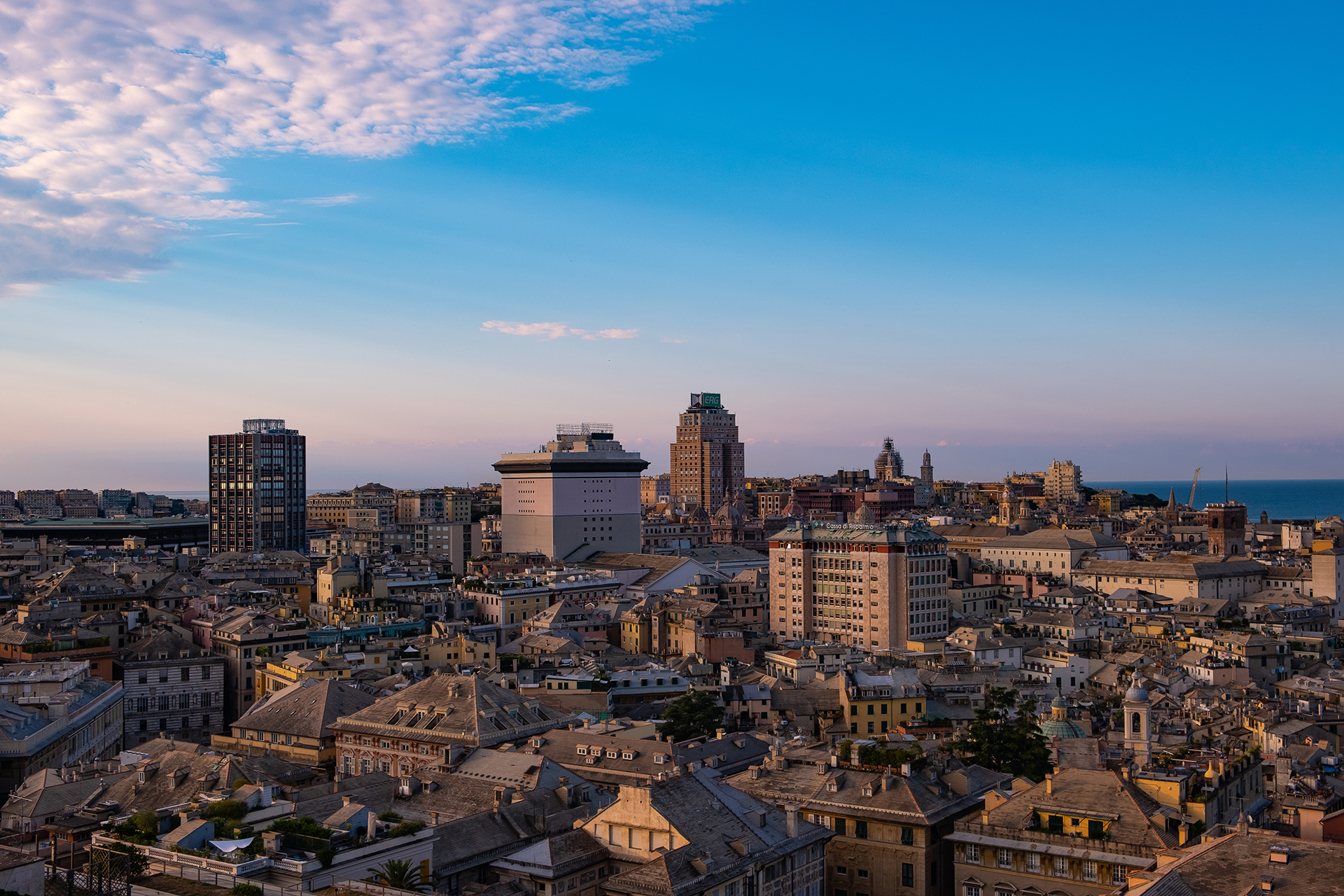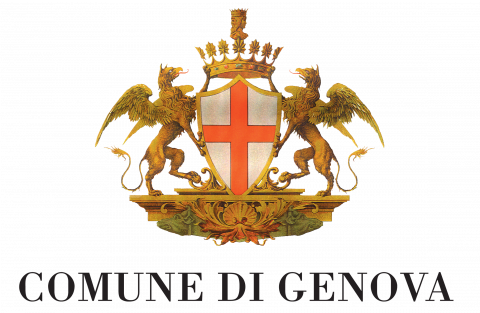
Municipality Genova
Municipality
Genova, fascinating coastal city, capital of the Liguria region in northwestern Italy, attracts visitors from all over the world with its vivid history, vibrant culture, and delightful seafood cuisine.
With about 565,000 inhabitants reaching more than 817,000 considering the metropolitan area, it consists of a narrow coastal strip, between the Ligurian Sea and the Apennines, with hills and steep reliefs in the hinterland covering a total area of 240 sq. km, 73 of which are urbanized.
The coast of the municipality, almost 35 km long and urbanized for over 93% of its length, intersects the mouths of 65 waterways whose main and secondary branches cross a large part of the municipal built area. These territorial features reflect the distribution of the urban fabric, the infrastructural system dedicated to logistics and the mobility of people.
The heart of the city, in continuity with the circular old port, is its historic centre, one of the largest in Europe, where the ancient buildings resound from the Middle Ages, the Renaissance and the nineteenth century.
Genova’s path for the future to 2030 and 2050 is based on some key steps: learning from the past, studying future scenarios and preparing, anticipating, preventing, transforming challenges into opportunities. Our vision is disclosed in the Lighthouse City Strategy and in the Action Plan for 2050, that foster a city deeply interconnected, renewed and solid in the relationships and solutions aiming to achieve sustainability as a cultural, infrastructural and economic transformation.
About Climate Change, similar to other medium-sized European cities, the territory of the city is affected by various natural and anthropogenic phenomena caused by orographic characteristics, chaotic urban development that expose the territory and the population to serious risks. In particular, the city urban environment is extremely vulnerable to storms, heavy rains, floods, heat waves, wildfire, coastal erosion and other extreme meteorological events (sea storms, windstorms) occurring with increasing intensity and frequency.
The meteo-hydrogeological risk that threatens Genova can be identified both in the dense natural hydrographic network innervating the urban area and in the needs of the urban settlements developed near the coast. Furthermore, it is strongly exposed to the increase in temperature and the consequent extreme meteorological events that cause a reduction in the quality of life in urban areas (e.g.: heat islands, reduction of water quality and availability, drought, etc.); economic damages and losses; impact on human health, especially for the most vulnerable groups of the population.
After the latest floods in 2014, the Municipality of Genova has strengthened a progressive path made by local interventions in its investment plan, also using the national budget allocated as a Safe Italy Mission, to adapt its infrastructure to possible extreme meteorological events.
Partner
The Genova Municipality has set ambitious goals to innovate land use, modernize infrastructure, regenerate urban areas, and enhance city governance. It is particularly committed to urban development with a focus on sustainable growth, balancing modernization with the preservation of historic sites. Emphasizing cultural heritage, the Municipality strives to protect and promote Genova’s rich cultural legacy. Since 2006, 42 historic buildings in the city centre, dating back to the Renaissance and Baroque periods, have been recognized as UNESCO heritage sites. This prestigious recognition brings the responsibility of safeguarding and enhancing these cultural treasures.
Economic growth is actively supported by the Municipality through local business development, attracting investments, and promoting Genova as a tourist destination. Key economic sectors include maritime trade and tourism, integral to the city’s economy.
Environmental sustainability is a priority for the Genova Municipality, which implements policies to reduce carbon emissions, increase green spaces, and promote renewable energy. Initiatives such as the Action Plan for 2050 aim to foster a city deeply interconnected, renewed and solid in the relationships and solutions to achieve sustainability as a cultural, infrastructural and economic transformation.
Additionally, the Municipality participates in numerous research projects focusing on economic development, employment, city management, port and infrastructure, and eco-sustainable growth. It also prioritizes the natural environment and green mobility. Community involvement is highly valued, and the Municipality actively encourages citizen participation in decision-making processes.

The Municipality of Genova is the governing body of one of Italy’s most historically and culturally rich cities. As the regional capital of Liguria in northern Italy, Genova boasts a well-organized municipal structure designed for effective governance and public service. Led by the Mayor, the City Council, consisting of elected representatives, collaborates with various departments to meet community needs. These range from urban planning and cultural preservation to social services and economic development. The city is divided into local administrative districts to address the unique needs of its diverse neighbourhoods efficiently.
Genova, with its nearly 35 km of coastline, overlooks the sea, which is crucial to the local economy. The city’s economy is diverse, including administrative and economic centres, tourism, and numerous cultural and natural attractions. High-tech industries and the blue economy are also significant contributors. The port of Genova is a hub for technical, professional, scientific, and educational expertise related to the maritime economy. The entire Ligurian coast is an essential environmental and economic asset, supporting activities in tourism, culture, and innovation.

